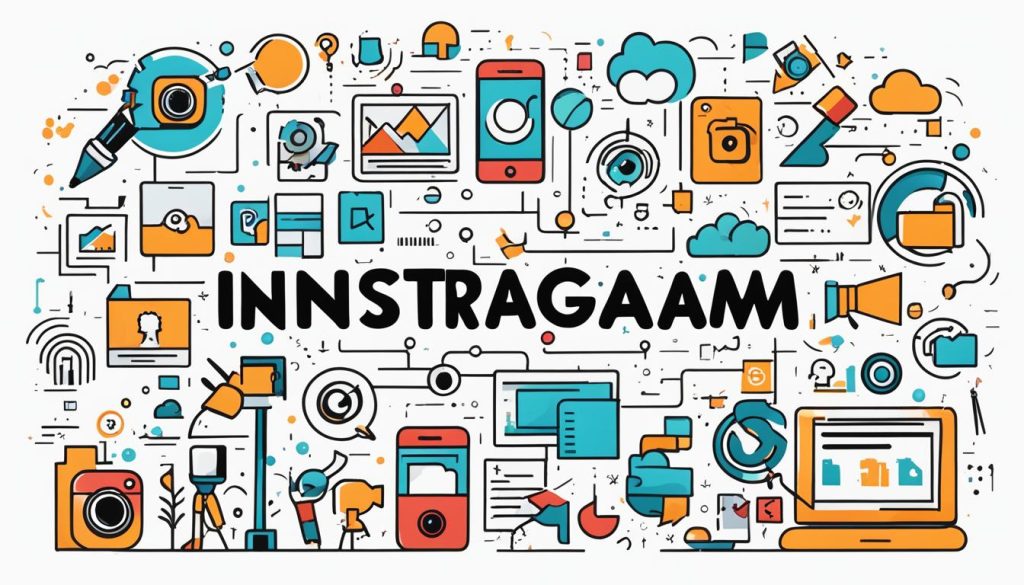As you venture into the digital marketplace, the efficacy of your landing page becomes incontrovertibly linked with the success of your online presence. In the realm of conversion optimisation, crafting a landing page that heightens user engagement is the linchpin to elevating your conversion rate optimisation. The virtuosity of landing page design hinges on its ability to channel a visitor’s focus towards a singular conversion goal – whether that be leads, clicks, or sales.
The creation of such a targeted environment on your landing page mandates an elimination of distractions. With this focus in mind, your value proposition must take centre stage, ensuring that it’s communicated in a manner that is both distinct and compelling. Coupled with an unmistakable call to action (CTA), your landing page stands to accomplish its primary mission: conversion. Trust-building elements like testimonials further reinforce the persuasive prowess of your landing page, championing a design that is not just visually appealing but conversion-focused.
Key Takeaways
- Emphasise a clear, singular conversion goal to streamline visitor focus.
- Ensure distractions are minimised to spotlight your value proposition.
- Invest in a landing page design that inherently guides visitors towards taking action.
- Employ clear, unambiguous CTAs to encourage immediate responses.
- Build trust and credibility through the incorporation of social proof like testimonials.
- Aim for a user-centric design that is tailored to the desired user action for maximised engagement.
Understanding the Importance of Landing Page Design
The effectiveness of your online presence hinges significantly on the design of your landing page. An exquisitely crafted page not only captures attention but also dictates the user’s journey through your marketing funnel. It’s here that visual design and user experience coalesce to initiate meaningful interaction.

First Impressions: How Design Affects Visitor Engagement
Your landing page is the digital front door to your business. A compelling visual presence, informed by the principles of visual design, is crucial in capturing the split-second attention of visitors. The layout, imagery, and colour schemes are more than mere decoration; they form the cornerstone of page performance, galvanising first impressions and setting the stage for user engagement.
The Role of Aesthetics in Users’ Decision-making Process
Aesthetics are not merely about beauty; they carry a functional element by significantly informing the decision-making process of users. A thoughtfully designed page does not only align with your brand’s aesthetic but also plays a pivotal role in optimising the user experience, thus fostering trust and credibility at first glance.
| Element | Impact on User Experience | Contribution to Marketing Funnel |
|---|---|---|
| Colour and Typography | Establishes brand identity and influences mood | Guides the visitor’s attention through the funnel stages |
| Navigation | Enhances ease of use and accessibility | Smoothens the pathway to conversion |
| Loading Speed | Affects retention and reduces bounce rates | Increases the likelihood of a completed conversion |
| Responsive Design | Ensures seamless experience across all devices | Expands reach and potential for conversions |
As you delve deeper into the realm of landing pages, remember these elements and their collective impact on the user journey through your marketing funnel. Well-executed visual design and attentive consideration to user experience are instrumental in not just drawing in the visitor, but in moulding their path to conversion.
Perfecting Your Value Proposition
When it comes to presenting your brand to potential customers, the unique selling proposition (USP) is the nucleus of your value proposition. This is the definitive factor setting you apart in a crowded marketplace and convinces prospects that you are the provider of choice. It’s not merely about what you do, but how you do it uniquely well – your brand’s fingerprints on the services or products you provide.

Communicating Your Unique Selling Points Effectively
Your USP should not be hidden away like a precious gem – it must be a well-delineated beacon guiding every potential customer to your door. Crafting this message with targeted messaging that holds the power to engage and resonate is crucial. By employing succinct phrasing that captures the essence of your brand’s singular offerings, you are laying out a welcome mat that is not only distinctive but also deeply relatable to your target demographic.
Aligning Your Brand’s Message With Visitor Expectations
To meet and exceed visitor expectations, your communication must align with what they anticipate discovering when they land on your page. Your audiences are looking for a solution that dovetails smoothly with their needs and your value proposition must exude the confidence that your brand is the key to that fit. This is a dual dance of showcasing not just features, but also the tangible benefits that will make a substantial difference to your customer. It implicates everything from your headline strategy to the nub of your closing arguments in establishing the crystal clear value you’re offering.
By focusing on these elements, you will finesse your landing page into not just a stage for your USP, but a dialogue directly with the needs and wants of your visitors. It becomes an open conversation that centres your brand as the optimal solution for their challenges. Always remember, in the realm of conversion, clarity is your ally and ambiguity, the adversary. So tailor your USP conversation with precision, making each word a stepping stone towards your goal of conversion.
Key Elements of a High-Converting Landing Page
For anyone looking to enhance their online presence, understanding the essential components of a high-converting landing page is crucial. Such a page fuses various elements that work in concert to maximise conversions. Here we delve into the key attributes that make a landing page not just functional, but compelling and highly persuasive to its visitors.

Firstly, persuasive copywriting sits at the core of a successful landing page. It’s not just about what you say, but how you say it. Expertly crafted copy doesn’t just inform—it engages, persuades, and motivates the reader to take action. Coupling this with visually eye-catching graphics, you can present complex information in an easily digestible format, making the message both swift to comprehend and memorable.
Another pivotal element is the placement and design of CTA buttons. These buttons are the gateways for users to take the next step, and thus, they need to be impossible to ignore. Balancing aesthetics and functionality, they should stand out on the page and provide users with a clear, clickable invitation to move forward.
Interactive elements play a significant role in enriching user experience (UX). They serve to not only capture attention but also keep users engaged with your content. This might include quizzes, calculators, or even simple hover effects that make your page more dynamic.
Peer validation through social proof and testimonials is also critical. It’s one thing for you to tout the benefits of your product or service, but endorsements from past customers carry much more weight. Testimonials work as a powerful form of social proof, boosting credibility and trustworthiness in the eyes of prospective clients.
| Element | Description | Impact on Conversion |
|---|---|---|
| Persuasive Copywriting | Compelling copy that directly addresses user benefits | Influences user decisions and encourages action |
| CTA Buttons | Bold, clear calls-to-action | Higher click-through and conversion rates |
| Interactive Elements | Engaging features such as quizzes and animations | Increased user engagement and time on page |
| Social Proof | Customer testimonials and ratings | Enhanced brand credibility leading to trust |
| Eye-Catching Graphics | Visually engaging images and illustrations | Better user comprehension and retention of information |
In conclusion, by integrating these elements into your landing page, you can significantly improve its potency. Remember, each aspect works together to not only attract attention but to maintain it, guiding users towards the desired action—ultimately elevating your conversion rates.
Optimising Call-to-Action (CTA) Buttons for Conversion
When aiming to bolster your website’s conversion rate, special attention must be directed towards the strategic placement and design of your call-to-action (CTA) buttons. These are not mere visuals; they’re vital in navigating your visitors through the process of conversion, urging them to take the next step towards a purchase, sign-up, or any other desired action. Let’s probe into how you can enhance your CTAs for better performance and personalised user experience.
Placement and Design of Effective CTAs
Ensuring that your CTAs are visible without the need for scrolling, typically ‘above the fold’, can dramatically increase the likelihood of user interaction. Moreover, it’s essential to employ a design that stands out. This means using colours that contrast well with your site’s colour scheme and composing attention-grabbing copy that’s both concise and directive.
Utilising Dynamic Content to Personalise CTAs
Dynamic content serves as a high-impact tool for personalisation, adjusting the messaging of CTAs based on individual user data, their behaviour, and past interactions on your website. Such personalisation could potentially refine their experience and guide them seamlessly through the marketing funnel. Implementing dynamic content in your CTAs can make a marked difference in your conversion rate optimization efforts.
| CTA Element | Description | Impact on Conversion |
|---|---|---|
| Text Copy | Explicit, action-oriented language | Increases clarity and reduces decision time |
| Colour | Eye-catching, contrasting palette | Draws attention and distinguishes the CTA |
| Size and Shape | Large enough to notice, optimised for usability | Facilitates interaction, especially on mobile devices |
| Positioning | ‘Above the fold’ and within the natural browsing flow | Encourages immediate action |
| Personalisation | Content tailored to user attributes or behaviour | Makes the CTA more relatable and persuasive |
In conclusion, a well-considered CTA, crafted with the user’s journey in mind and refined with dynamic content for personalisation, can be a game-changer for your conversion rate optimization endeavours. Keep these strategies at the forefront to transform casual visitors into committed customers.
The Crucial Role of Persuasive Copywriting
At the heart of any successful landing page lies the art of persuasive copywriting. It’s the mastery of such writing that commands attention, harnessing the power of clarity and simplicity to drive the engagement rate through the roof. It’s not simply about telling your audience what you offer; it’s about connecting with them on an emotional level, presenting your solution as the answer to their unique challenges.

Consider persuasive copywriting as your unseen salesperson, working round the clock. It’s a potent tool at your disposal that can influence visitors, compelling them to act. Whether your goal is to have them sign up, buy a product, or merely engage with your content, the narrative you craft can make all the difference. With the right words, you transform prospects into customers, mirror their thoughts, and satisfy their needs.
By choosing to prioritise persuasive copywriting on your landing pages, you invite your potential customers into a narrative where their desires are met and their problems are solved.
- Simplicity – Make every word count. Strip away complexity to ensure your message is easily digestible.
- Clarity – Your audience should understand your offer from the first line, knowing exactly what benefits lie in store for them.
- Engagement – Speak directly to your reader’s experiences, their pain points, and their aspirations to capture and retain their attention.
As you continue to invest in persuasive copywriting, remember it’s not just about being clever or catchy; it’s about being clear, simple, and most importantly, effective in convincing your audience to act. Mastering this crucial element of landing page design sets the stage for increased conversions and burgeoning success in your online endeavours.
Crafting a User Experience That Converts
The digital landscape is fiercely competitive, and to thrive, one must deeply understand the interplay between user experience (UX) design and conversion rates. It’s not just about the aesthetics; it’s about creating a journey that feels tailored to your visitors’ needs and preferences. By analysing user behaviour and conducting rigorous usability testing, one can refine web interfaces to exude comfort and familiarity, paving the way for higher conversions.
Incorporating User Behaviour Analysis in UX Design
Comprehensive user behaviour analysis grants invaluable insights into how visitors interact with your site. It helps ascertain the elements that capture attention, invoke engagement, and facilitate a smooth navigation path towards conversion. By leveraging this data, you can design with a purpose, ensuring each component of your landing page, from the headlines to the images, is optimised for your audience’s distinct browsing patterns.

Usability Testing: Ensuring Your Landing Page is Intuitive
Usability testing stands as a cornerstone in validating the effectiveness of a landing page. It’s about going beyond mere speculation and onto empirical evidence that your design is not just appealing but also practical and intuitive. Ensuring that your conversion elements are placed where users naturally look and interact on your page can be the difference between a successful conversion and a missed opportunity.
Usability testing reveals the truth behind the design, unlocking the potential of every click, swipe, and scroll.
Remember, the goal is to shape a seamless experience that guides the user towards your desired action without confusion or hesitation. By observing real people as they use your site, adjustments can be made to streamline the journey, enhancing the user experience and ultimately, your conversion rates.
Building Trust With Social Proof and Testimonials
As you delve into the world of online business, you’ll quickly realise the indomitable power of social proof and testimonials. These are not mere buzzwords; they are fundamental trust elements that have consistently bolstered user engagement and conversion rate potential across diverse digital platforms.
Imagine landing on a page that boasts real, positive feedback from individuals who have experienced a brand’s products or services first-hand. These testimonials serve an invaluable purpose, fundamentally instilling confidence in prospective customers. They are the gleaming badges of credibility—each review a testament to the brand’s promise of quality and reliability.
To truly appreciate the potency of social proof, consider its function as a psychological lever—humans instinctually seek validation from their peers. Upon witnessing widespread endorsement, one’s trust in an offering naturally intensifies, easing the mental barriers to conversion.
- Personalised Reviews: Tailoring testimonials to reflect the diverse segments of your audience can dramatically enhance relevance and therefore, trust.
- Quantity and Quality: A substantial collection of high-quality, verified testimonials contributes to a stronger perception of social endorsement.
- Multi-Media Testimonials: Including reviews in various formats—text, video, images—caters to different user preferences and augments authenticity.
Remember, in the digital landscape where competition is just a click away, the distinct edge provided by authentic user testimonials could very well be the deciding factor for a visitor teetering on the brink of a conversion.
Therefore, give due importance to harnessing testimonials and showcasing them strategically. Whether through a dedicated review page or integrated within your landing page design, ensure that these trust signals are conspicuous and reflective of the positive experiences real users have had with your brand. It is this tangible assurance that can pivot browsing into buying, curiosity into loyalty.
Leveraging the Power of A/B Testing for Continuous Improvement
With digital landscapes constantly evolving, adopting agile methodologies like A/B testing proves indispensable for refining your landing pages. As a marketer, your objective is not just to attract visitors, but to understand their interactions, preferences, and behaviours through robust analytics. This methodical approach allows for fine-tuning elements that directly impact your engagement rate and conversion metrics.
Detecting Page Elements That Boost Engagement Rate
By implementing A/B testing, you can run controlled experiments to determine which versions of your page stimulate interaction and commitments. Potential variations include modifying headlines, altering images, or even adjusting the navigation structure. The end goal is to shed light on the strategies that enhance user engagement. Utilising tools like heatmaps, you gain visual representations of areas that capture the most attention and interaction, aiding your analysis considerably.
Understanding Visitor Segmentation for Targeted Messaging
Knowing your audience is key, and visitor segmentation divides your audience into manageable groups with shared characteristics. Crafting messages that resonate specifically with each segment boosts relevance and consequently, conversion. Segmentation criteria can range from demographic data to behavioural patterns, ensuring your content appeals directly to the user’s interests and needs. Here’s a glance at how segmentation works in practice:
| Segment | Characteristics | Preferred Content | Engagement Rate Increase After A/B Testing |
|---|---|---|---|
| Professionals aged 25-34 | Career-focused, digital-savvy | Industry reports, success stories | 15% |
| Students aged 18-24 | Education-oriented, budget-conscious | How-to guides, discount offers | 20% |
| Retirees aged 65+ | Value leisure, health-conscious | Wellness tips, travel discounts | 25% |
As you venture into the world of A/B testing, remember that every change you explore has the potential to yield rich insights. This data-driven strategy, coupled with conversion tracking and a detailed grasp of your engagement rate, is your stepping stone towards optimising the user experience and scaling your conversion efforts. Keep testing, keep learning, and let the metrics guide your path to landing page mastery.
Enhancing Page Performance for Higher Engagement
To optimise your landing page for peak performance, it’s essential to address critical factors that influence visitor interaction and SEO. Load speed and mobile responsiveness are the cornerstones of a technically sound website that retains visitors and reduces bounce rates. Let’s delve into the importance of these elements and how visual design principles interplay to enhance your page’s capabilities.
Importance of Load Speed and Mobile Responsiveness
As page load speed is directly linked to visitor retention, it’s imperative to ensure your site loads swiftly. In an era where patience is scarce, slow-loading pages equate to increased bounce rates and lost opportunities. Mobile responsiveness too can’t be overstated; with a significant portion of internet browsing conducted on mobile devices, your site must adapt seamlessly to different screen sizes to offer an uninterrupted user experience.
How Visual Design Elements Impact Page Performance
Strategic visual design principles serve more than aesthetic purposes; they support the architecture of a site that is not only attractive but also optimised for conversion tracking and SEO. Balancing images, text, and white space contributes to a page’s readability and load speed, impacting the overall interaction with the visitor.
| Performance Metric | Impact on SEO | Impact on User Experience | Tools for Tracking |
|---|---|---|---|
| Load Speed | Higher rankings in search results | Reduced bounce rate | PageSpeed Insights |
| Mobile Responsiveness | Increases visibility for mobile searches | Enhanced accessibility and navigation | Mobile-Friendly Test |
| Use of Visual Design | Engages users and encourages content sharing | Improves comprehension and retention | Hotjar, Google Analytics |
In summary, your attention to load speed, mobile responsiveness, and visual design principles is vital for creating a user-centric experience that not only delights but converts. Employing regular conversion tracking can reveal actionable insights, allowing for ongoing enhancements to your landing page’s performance metrics.
Conclusion
In the quest to fine-tune your marketing funnel, it’s pivotal to recognise the integral components that coalesce to form a potent landing page—one that excels in conversion rate optimisation. Thriving in the digital arena mandates an amalgamation of a design that’s captivating enough to sustain user engagement, with a value proposition that strikes a chord, impelling visitors to act. Your landing page shouldn’t merely list features; it must underscore benefits that meet the needs of your clientele.
Central to this endeavour is the application of persuasive copywriting that navigates customers through their journey, augmented by a user experience devoid of friction, and champions of trust who validate your offerings through social proof. Remember, fostering an environment that encourages customer feedback and routinely harnesses its insights can markedly propel lead generation and facilitate a thriving business.
As you continue refining your digital touchpoints, it’s worth noting that methods such as A/B testing, along with an unwavering commitment to performance benchmarks—like swift load speeds and unerring mobile responsiveness—constitute the bedrock of sustained improvement. By integrating these dynamic facets, Grew Studio pledges to offer personally tailored consultations that substantially bolster business augmentation and customer acquisition.
FAQ
What is conversion optimization?
Conversion optimization is the process of enhancing your landing page and other marketing elements to increase the percentage of visitors who take a desired action, such as signing up for a newsletter, making a purchase, or filling out a contact form.
How does landing page design influence user engagement?
A well-designed landing page uses visual cues and a user-friendly layout to captivate visitors, making it easy for them to understand the value proposition and navigate to the call-to-action (CTA), which improves user engagement and lowers the likelihood they’ll leave the page prematurely.
What is the importance of a unique selling proposition (USP) on a landing page?
The USP is crucial as it succinctly communicates what sets your brand apart, providing visitors with a clear understanding of the unique benefits your product or service offers, and compellingly reasons why they should choose your brand over competitors.
Which elements are vital for a high-converting landing page?
Key elements include persuasive copywriting that clearly communicates benefits, prominent and intelligible CTA buttons, interactive features that engage users, social proof such as testimonials to build trust, and eye-catching graphics to attract and retain attention.
How should CTA buttons be optimized for better conversion rates?
CTA buttons should be strategically placed, such as above the fold for immediate visibility, designed with contrasting colours to stand out, and feature compelling copy. Utilising dynamic content can also tailor CTAs to individual user behaviour, enhancing personalization and effectiveness.
Why is persuasive copywriting crucial on a landing page?
Persuasive copywriting captures the audience’s attention and directs them towards taking an action. It clearly communicates the benefits of an offering, solves visitors’ pain points, and motivates them to engage with the brand, significantly impacting the page’s conversion rate.
How does user behaviour analysis enhance UX design for landing pages?
By analyzing how users interact with a website, UX designers can make data-driven decisions to create intuitive pathways towards conversion, ensure content relevance, and remove any friction points that might hinder the user journey towards the desired action.
In what ways do social proof and testimonials build trust?
Social proof and testimonials provide credible evidence of the satisfaction and success of current customers. This endorsement by peers helps to alleviate fears of potential customers by showing that others have had a positive experience with the brand or product.
How does A/B testing contribute to the improvement of landing pages?
A/B testing allows you to compare different versions of your landing page to see which performs better. It provides empirical data on user preferences and behaviors, helping you to optimize elements such as headlines, graphics, and CTAs for higher engagement and conversion rates.
Why are load speed and mobile responsiveness critical for landing page performance?
Fast load speed and mobile responsiveness are instrumental in providing a seamless user experience. Slow loading times and poor mobile experiences can lead to high bounce rates, while fast, responsive design keeps visitors engaged and more likely to convert.
How does page performance impact SEO?
Google takes into account factors like load speed, mobile-responsiveness, and user experience when ranking pages. A well-performing webpage can rank higher in search engine results, increasing visibility and the likelihood of attracting more traffic ready for conversion.
What role does customer feedback play in landing page optimization?
Customer feedback provides insightful data on what users like and dislike about your landing page. It’s a valuable resource for continuous improvement, helping to adjust elements that may not be working and reinforce those that are effective at generating leads and conversions.





